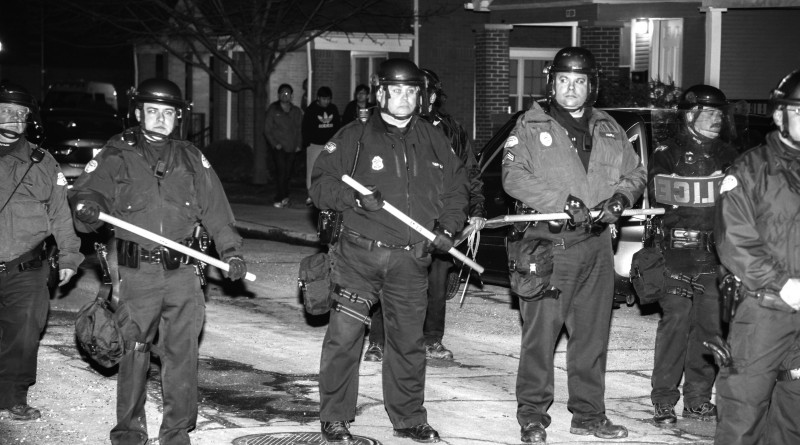Ohio resolution impacts UD police, campus
By: Julia Hall – Staff Writer
The more UD students become involved in these conversations the better. Universities are historically places where social change gets sparked.” – Jamie Longazel, Ph.D.
Gun violence and police shootings have flooded recent national news. In response to these issues, Ohio set aside $24.6 million to support the intensification of training and modernization of equipment for state police forces. UD Police will be affected by this decision through the training opportunities that arise; however, they most likely will not receive any of the financial support.
UD Police lies within the private sector, which means that government funding is limited, despite their alignment with government regulations.
Chief Bruce Burt of UD Police outlined the realistic effects of the budget on UD: “Traditionally, we have not been entitled to any money for this training. Although we participate in it, we pay for it ourselves.”
This amplification of police training results from the recent tension and violence between communities and police officers nationwide.
“There is an organization called the Community Police Advisory Board,” Burt said. “It was put together by the state. They are working to resolve the controversy around the country concerning police-community relations. “
Additional training is the path that Ohio has chosen to take in response to mend these relationships. Although the consequences of these decisions are yet to be determined, many citizens find such changes hold promise.
“I think it is pretty clear there is a problem here,” Jamie Longazel, Ph.D., assistant professor of sociology and research fellow in the Human Rights Center said. “I think training is important. I have done some of this training myself. I like to see money put to work with such training.”
Mike Brill, SGA president and senior psychology and political science major, reacted positively to Ohio’s resolution as well.
“I don’t believe it will change the overall gun culture in our society, but I think it will at least help a little,” Brill said. “First and foremost, it is important that we protect our citizens and that the use of force is only used when necessary.”
Extensive training and policies were already in place for UD Police prior to the new budget and focus on police training promoted by the state.
“Some people from the media asked me, ‘How are you going to be impacted? What are you going to do different now?’” Burt explained. “I said, ‘Nothing. We will continue to provide the service that we have been providing that aligns with our policies and the law.”
With recent events, police officers have developed a stigma associated with their profession.
“I am hoping there will be a little better understanding of the public of how much training and how many policies are already established,” Burt said.
Misconceptions and misunderstandings are common in relationships between the public and police, on both ends. Chief Burt said that he hopes the contribution and allocation of funds for police training will improve the public’s understanding, as well as advance the student-police relationships on campus.
“My freshman year, on Saint Patrick’s Day, people were throwing bottles at police,” Brill said in regard to student-UD police relations. “I think that we need to realize that in these situations, Public Safety is here to be supportive and protective of us.”
The training of police officers affects the public-police relationships, but Longazel explained that other factors contribute to the recent ill will.
“First off, nothing is new,” Longazel said. “Police brutality has been going on throughout the history of our country. We are only now paying attention to it. The problem of racism within the criminal justice system more generally would be the persecuting issue, where there are vast disparities in the treatment of populations—particularly black males.”
For instance, Longazel explained that black male students at predominantly white institutions are more likely to be stopped by authority figures around campus.
“They are stopped just because they are a black male,” Longazel said. “These kinds of things are called micro-aggressions.”
Longazel, though, offered a suggestion to improve these relations, at least on UD’s campus.
“Universities are historically places where social change gets sparked,” he said. “The more UD students who become involved in these conversations, the better.”
If you would like to share your opinion on police training and the public’s relationship with the police, email Flyer News’ Opinions Editor Steven Goodman at goodmans1@udayton.edu.
Photo: UD Police stand guard in the student neighborhood March 2014 during the NCAA tournament. Photo by Multimedia Editor Chris Santucci.

